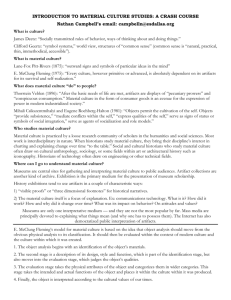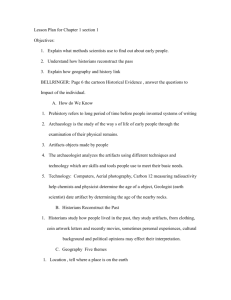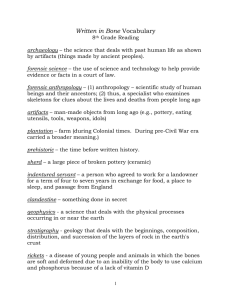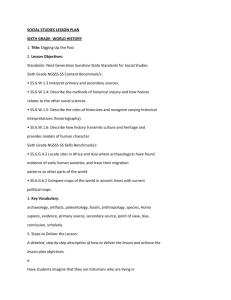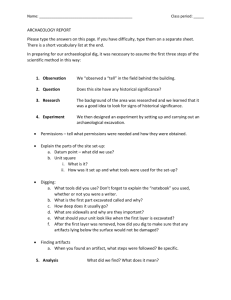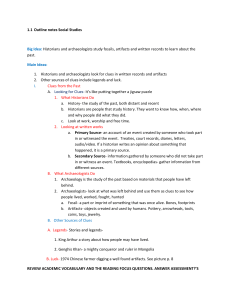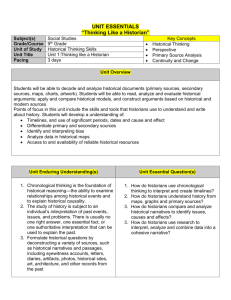Archeology text assi.. - Hrsbstaff.ednet.ns.ca
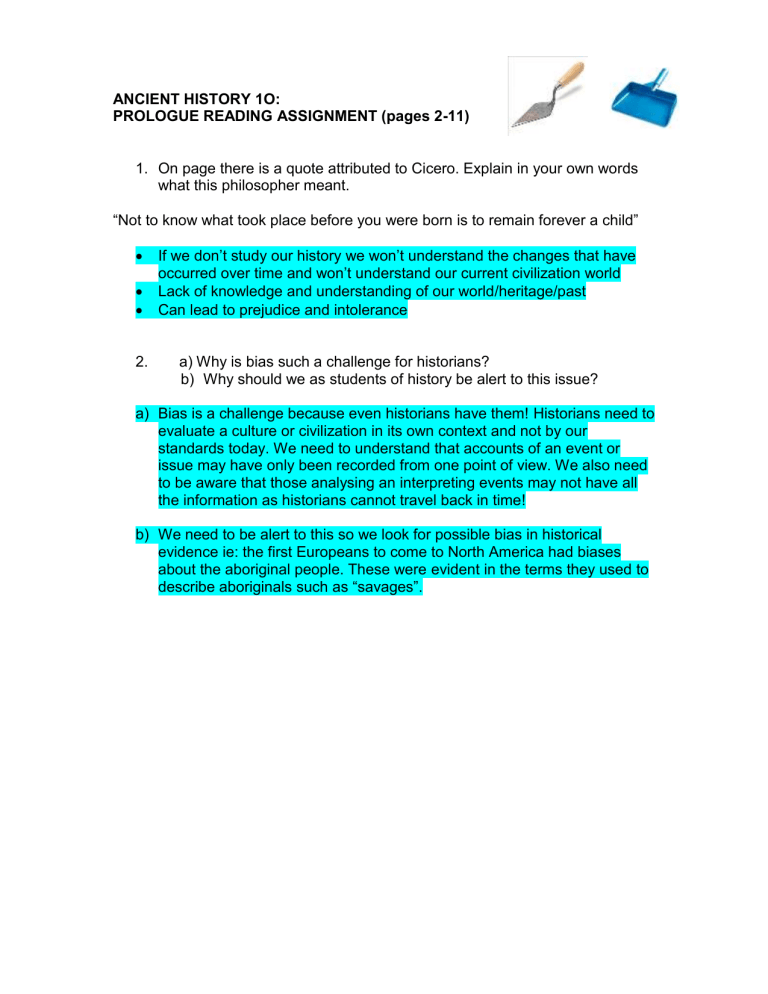
ANCIENT HISTORY 1O:
PROLOGUE READING ASSIGNMENT (pages 2-11)
1. On page there is a quote attributed to Cicero. Explain in your own words what this philosopher meant.
“Not to know what took place before you were born is to remain forever a child”
If we don’t study our history we won’t understand the changes that have occurred over time and won’t understand our current civilization world
Lack of knowledge and understanding of our world/heritage/past
Can lead to prejudice and intolerance
2. a) Why is bias such a challenge for historians? b) Why should we as students of history be alert to this issue? a) Bias is a challenge because even historians have them! Historians need to evaluate a culture or civilization in its own context and not by our standards today. We need to understand that accounts of an event or issue may have only been recorded from one point of view. We also need to be aware that those analysing an interpreting events may not have all the information as historians cannot travel back in time! b) We need to be alert to this so we look for possible bias in historical evidence ie: the first Europeans to come to North America had biases about the aboriginal people. These were evident in the terms they used to describe aboriginals such as “savages”.
3. Create a flowchart that outlines the procedures followed by archaeologists. Include a minimum of 8 steps (read carefully!)
FLOW CHART
Determine Assemble dig Remove first Carefully where to dig team layer of soil- dig to where record location of artifacts are found artifacts on graph paper
Label and place artifacts in bags/ analyse soil stains
Compile all of the reports for the members of the team
Analyse artifacts in the lab
Prepare site report
4. Discuss 3 challenges faced by underwater archaeologists- point form for this is fine!
5.
5 possible answers… a) conventional diving can only be done to 35m b) the time spent under water is limited (4 hours per day) c) limited mobility and dexterity d) lack of visibility e) artifacts need immediate treatment as soon as they are removed from the protective silt
6. What are the ideal climate conditions for preserving organic remains? a) hot and dry- deserts b) cold and frozen- artic c) peat bogs
7. How can an archaeologist studying human remains determine the following: (Point form notes are fine & one example for each topic is adequate.) a) age of children b) age of adults c) gender d) disease e) occupation f) injury a) age of children: examine teeth b) age of adults: fusion of bones and wear patterns in teeth c) gender: bone structure/pelvis d) disease: evidence of slowed growth or bone deformation, brittle bones etc. e) occupation: bone wear f) injury- damage to bones ie cuts, holes, shattered bones
8. What information can be gathered from inorganic remains such as stone tools and pottery shards?
Stone tools:
How tools were made- what materials were preferred
Where were the stones quarried (locally or far away?)
What plants were used/consumed
Pottery:
Type of pots that were made
How much the clay was worked
Techniques use to make and decorate the pottery
Sometimes the name of the potter
Image Sources: http://www.tool-up.co.uk/img/fs/15773.jpg
http://www.jwodcatalog.com/imgLg/7290006160109.jpg
